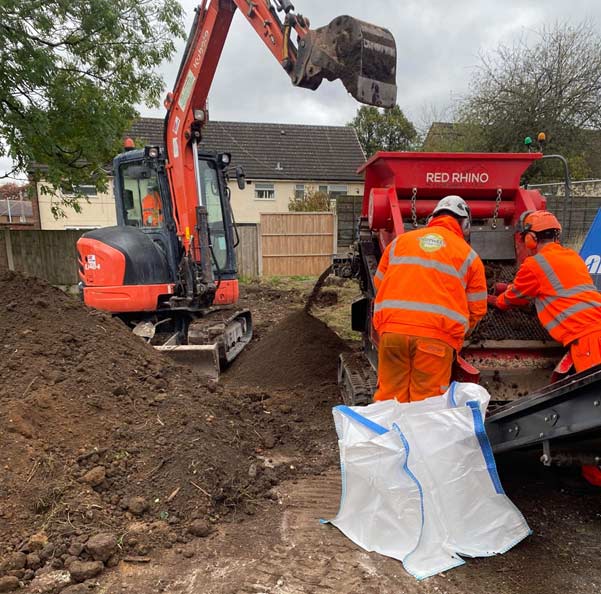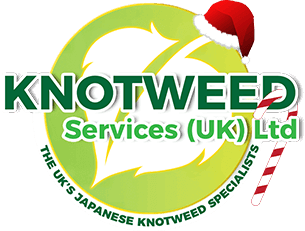JAPANESE KNOTWEED REMOVAL Stockbridge
3
LIVE KNOTWEED JOBS IN Stockbridge
16
SUCCESSFUL KNOTWEED REMOVAL PROJECTS IN Stockbridge
100%
SUCCESSFUL PROPERTY SALES AFTER TREATMENT
8
Stockbridge BASED KNOTWEED STAFF
NO OTHER JAPANESE KNOTWEED COMPANIES IN Stockbridge HAVE OUR TRACK RECORD
As one of the most trusted Japanese knotweed removal companies in Stockbridge, Knotweed Services has the knowledge and expertise to remove all types of Japanese knotweed from private gardens, roadsides, or golf courses.
We’re a member of the PCA, a government-approved trade body for the damp and waterproofing industries. Any PCA member can be relied on to deliver exceptional treatment techniques and methods for Japanese knotweed removal.
Our extensive knotweed removal expertise has allowed us to tackle and solve a number of large and complex eradications in and around Stockbridge and England. Effective knotweed plant control requires experienced identification, surveying, treatment, and control. Let us help you today!
Know Your Knotweed!
We offer a complete service to deal with Japanese knotweed on residential and commercial properties. Contact us for a survey and we’ll give you the information and help you need to make an informed decision.
If you’re a commercial land or property owner and knotweed is present, your project could be delayed until the harmful plant is removed.
How Does Japanese Knotweed Spread
- The invasive plant Japanese Knotweed can grow through tarmac and concrete, posing a structural threat to buildings.
- Lenders often deny mortgages against buildings affected by Japanese knotweed.
- Knotweed has strong branching and hollow stems that quickly grow and spread, obstructing both visibility and access to paths, highways and other infrastructure. This is a particular problem for commercial properties.
Knotweed Services For customers in Stockbridge with Japanese Knotweed, we should be your first call. We’ll always ensure that the knotweed is removed entirely and our warranty guarantees (insurance-backed guarantee available).



FREE IDENTIFICATION
Fill in the form below, attach your pictures and we’ll let you know if the plant in your picture is Japanese Knotweed.
Call our experts today to start the treatment and management of your knotweed problem in Stockbridge
Call us on: 0121 725 6348 or 0800 689 4146 for an immediate quote
From the first point of contact, Knotweed Services will support you through the entire process.
RESIDENTIAL JAPANESE KNOTWEED REMOVAL Stockbridge.
WHAT YOU NEED TO KNOW ABOUT JAPANESE KNOTWEED REMOVAL Stockbridge
Japanese knotweed infestations vary widely from property to property, so it’s not surprising that treatment and control methods will too. It may be necessary to use one method or a combination of knotweed removal methods on one property.
Our weed control professionals study your property’s specific factors to determine the right methods to control the weeds. We guarantee every job we do.
— JAPANESE KNOTWEED REMOVAL OPTIONS AVAILABLE IN Stockbridge

FOLIAR SPRAYING *
We spray an herbicide containing chemicals on Japanese Knotweed, using a knapsack sprayer. We ensure that other plants aren’t damaged by spraying only when the weather conditions are suitable for the chemicals to work effectively. The most effective time for foliar spraying to Japanese Knotweed is in Spring.

FOLIAR LEAF WIPING *
With this Japanese knotweed treatment, we use a device to ‘physically wipe’ our chemicals onto the Japanese knotweed leaves. Because this use is so exact, we can often utilise a larger concentration of chemical.

STEM INJECTION
We inject the invasive weed with a small dose of herbicide. This is the most cunning elimination technique since it involves injecting chemicals right into the Japanese knotweed. It is not affected by the weather.

BIOMASS REDUCTION
Biomass is a type of excavation and removal, but instead of taking out all of the soil, we only take out the parts of the soil that are infected. It’s a great way to get rid of Japanese Knotweed because the soil can be used again. Using landfills less often.

CROWN REMOVAL
Crown and stems are capable of regenerating and even small fragments of cut crown or stem are capable of regenerating and becoming a new invasive weed – removing these from the equation is a great strategy.
— COMMERCIAL TREATMENT OPTIONS AVAILABLE IN Stockbridge

SOIL SCREENING
A tried-and-true methodology used on hundreds of sites throughout the UK
Using the screening method, the Japanese knotweed rhizome material is separated from the soil material. The Japanese knotweed material is then either transported to a licenced landfill at a much lower disposal rate or incinerated on site using a D6 exemption from the Environment Agency or Natural Resources Wales.
The cleaned soils can then be used elsewhere, usually in soft landscaping areas, where they won’t be in the way of building.
This can significantly reduce landfill and backfill costs while also helping to reduce the carbon footprint on site due to fewer vehicle movements to the landfill.

BIOSECURITY SUPERVISION
To keep an eye on any digging or shifting of soil containing Japanese knotweed on your property, we can send a biosecurity worker.
We can set up a location where individuals can wash their boots and equipment at the site entry as a part of these precautions. We will supply the primary contractor with all toolbox discussions, which will be signed by all other contractors involved in the operation on site.
In locations where biosecurity is essential, we are able to offer temporary geotextile barriers.
After the service is over, we will deliver a thorough biosecurity report to the client.
This technique can be used in conjunction with other on-site therapeutic strategies.

EXCAVATION AND DISPOSAL
This treatment method is ideal where time constraints are present and there’s no other option other than to remove both the Japanese Knotweed and contaminated soil to a registered landfill.
By removing all traces of the infestation quickly, this offers a rapid solution to your problem and allows your commercial project to begin groundwork’s almost straight away. When time is of the essence, there is no quicker Japanese Knotweed removal/treatment method.
Any waste taken off-site will be done so with a licensed waste carrier to a suitably authorised landfill site.

CELL BURIAL
Cell burial comprises of moving Knotweed contaminated soil from one location on site, burying it in an excavated pit which is lined with a root barrier membrane, in a different position on the site.
The burial requirements for Japanese Knotweed are as follows:
- The Environment Agency recommends that the top of the burial cell should be a minimum of 2 metres below ground level.
- The overall depth of the burial pit should be in excess of 5 metres deep. All root barrier seams are welded together forming an encapsulated cell from which the Japanese Knotweed cannot escape. Clean soil is then used to backfill on top of the cell.
- To prevent accidental disturbance of the burial site, it is recorded on all site plans and future land owners should be made aware of the location.

STOCKPILE & TREAT
Japanese knotweed-contaminated soil can be moved to another portion of the site being treated using a technique called bunding. A bund is a patch of polluted soil that is only a few metres deep.
To make the surface flush with the surroundings, the bund can either be lifted, placed on top of the land, or positioned inside an excavation.
The bund’s function is to relocate the Japanese knotweed to an inactive portion of the land. The Japanese knotweed may now be treated, which would not have been possible in its original location.

HERBICIDE APPLICATION
At Knotweed Services we can provide the client with bespoke treatment plans depending on the locations of the Japanese knotweed.
These plans can work in conjunction with other methods of treatment where access is limited to pedestrian movements i.e., embankments or existing pathways within a site.
This will normally consist of up to 3 visits per annum to apply herbicide by either foliar spray technique or stem injection during the growing season over a period of 3 years, with a monitoring period of 2 years thereafter.
We would select the appropriate herbicides depending on the surrounding foliage or environmental constraints.
After each visit a full treatment record would be provided with photos showing the progress of the works and then an annual report.
